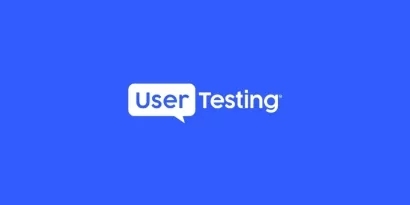
Episode 174 | June 09, 2025
UX for AI: Designing intelligent experiences with Greg Nudelman
Discover how UX must evolve in the AI era with Greg Nudelman. Learn to design intelligent, content-first experiences that truly serve users.
Why traditional UX is sinking fast—and how to design for the age of AI
Imagine you're designing the controls for a spaceship—but you're still using blueprints for a horse-drawn carriage. That’s the kind of disconnect happening today within UX teams, says Greg Nudelman, as artificial intelligence reshapes how digital products behave and respond to users.
Greg, a Distinguished Designer at Sumo Logic and author of the newly published UX for AI, joins host Sean Treiser in this week’s Insights Unlocked to pull back the curtain on what designing for AI truly demands.
It's not just about visual interfaces anymore, he says, it's about content, context, data, and intelligent interaction.
The iceberg UX: what's beneath the surface is what matters
In a recent blog post that went viral, Greg introduces a compelling metaphor: “iceberg UX.” Much like an iceberg, the visible part—the user interface—is just a small fraction of the full experience. The true value lies beneath the surface: in the content, the intelligence, and the model powering the interaction.
"UX is not UI. The plate needs to get out of the way—we need to focus on the steak," Greg said, highlighting how superficial design elements are becoming increasingly irrelevant in AI-driven design contexts.
This isn't just a critique of the UI design tools we use, it's a call to evolve. In AI UX workflows, visuals are no longer the hero. Instead, prototypes should be working code connected to real data, with design teams testing output, not just appearance.
ON-DEMAND WEBINAR
Effective AI: how to choose the right generative AI features—and build them fast
Why lorem ipsum is dead
For years, placeholder text like “lorem ipsum” has been a staple in wireframes and mockups. Greg says it’s time to let it go.
"If you're still using lorem ipsum, stop. That’s not UX anymore. That’s decoration," he insists.
In AI-driven design, the content is the experience. Whether it's a chatbot’s tone or a summary of analytics, the value lies in what’s being communicated and how it supports the user’s goal.
As tools like generative AI automate layout and styling, human designers need to lean into crafting meaningful, personalized, and context-aware content.
Designing with a content-first mindset means asking:
- Is the AI output relevant and useful in this moment?
- Does it align with the user’s workflow?
- Is it drawing from trustworthy data sources?
- What happens when the AI is wrong?
From wireframes to working prototypes
Greg emphasizes the need for a “drag-based” prototyping workflow—one where designers directly integrate AI models into user tests. Instead of guessing what content might work, you run real prompts and evaluate the live output with users.
This shift from mockups to working prototypes with real data and real AI means UX teams must partner more closely with data scientists and AI engineers.
“AI is too important to be left to data scientists,” Greg argues. “UX needs a seat at the table.”
This topic isn’t limited to Greg, in episode 159, Dr. Sam Howard introduces what he calls the "Many Wizards of Oz" method for UX research, redefining how AI-driven experiences are designed and tested.
Measuring success in the AI era: The value matrix
Another powerful idea from the episode is Greg’s “value matrix,” a tool to evaluate both the upside and downside of AI predictions. For example, if a model saves three seconds of user time but occasionally delivers incorrect results, what's the tradeoff?
One scenario Greg discusses mirrors Netflix’s profile selection screen. An AI model could guess which profile to load based on user behavior. But if it's wrong—even just 0.3% of the time—it could lead to serious issues like a child being exposed to inappropriate content.
“You’d need 99.7% accuracy for it to be worth removing the manual step. That’s just not achievable today,” he said.
The takeaway? Just because AI can automate something doesn’t mean it should. UX teams need to assess risk, reliability, and real-world impact—not just accuracy.
Empathy and ethics: the core of UX for AI
A common thread throughout the episode is Greg’s insistence on empathy as a core UX skill. He warns against getting swept up in tools and aesthetics at the expense of customer conversations and real human insight.
“If you haven’t talked to a customer today, that’s already too long,” Greg says. “A week? Rethink your workflow—and maybe your career.”
Designers should be asking:
- Where’s the data coming from?
- Who does it represent?
- What biases might it include?
- What are the real-world consequences of a bad prediction?
The answers to these questions don’t come from tools. They come from customers, testing, and cross-functional collaboration.
Designing for AI agents: from tools to teammates
As AI systems evolve from static responders into proactive agents, the role of designers shifts once again. These agents can now make decisions, initiate actions, and even communicate with other agents. It’s a huge leap—and it demands new design paradigms.
Greg uses the analogy of an anthill to describe this new dynamic: the human user may interact with a single "queen" AI interface, but behind the scenes, a swarm of specialized agents is working together to fulfill complex tasks.
Designers need to consider:
- How do we manage trust and handoffs?
- What does “checking in” with the user look like?
- How do we provide visibility into what agents are doing?
“These agents are like interns—right now. But soon, they’ll be the adults in the room. And they won’t forget anything,” Greg warns.
Rethinking roles and value as UX evolves
One of the most candid parts of the conversation is Greg’s reflection on his own career shift. He recalls designing over 1,000 mockups for a project—only to realize they fixed zero broken user queries.
“Six months of work. Thousands of hours. And it didn’t change the outcome. That was my wake-up call,” he said.
That realization pushed him to explore AI product design, develop new workflows, and ultimately write UX for AI. Today, he encourages every designer to do the same kind of soul-searching:
- Where is your real value?
- Are you helping your team navigate complexity?
- Are you using empathy and insight to shape how AI interacts with people?
Practical next steps for UX teams
If your team is ready to shift from traditional UX to AI-driven design, here’s where to start:
- Talk to your customers daily – Insights come from conversation, not static data.
- Prototype with real AI output – Test functionality, not just appearance.
- Use the value matrix – Evaluate prediction impact, not just accuracy.
- Collaborate across functions – Work with data scientists and engineers early.
- Focus on empathy – Understand users’ contexts, needs, and expectations.
The final word: A call to lead with curiosity
The world of AI is moving fast—but Greg’s advice is clear: stay curious, stay human, and step forward with intention.
“This is the first truly new thing in decades. It’s like becoming Iron Man—but for your brain,” he said. “We all need to embrace it, shape it, and lead the way.”
Episode links:
- Greg on LinkedIn
- UX for AI book
- UX for AI website
- Sumo Logic
- The Iceberg UX post
- Sean on Linkedin
- Making the case for content testing in your organization: This webinar explores how to advocate for content testing within your team, emphasizing the importance of evaluating real content over placeholder text like "lorem ipsum." It aligns with the episode's discussion on prioritizing meaningful, user-centered content in UX design.
- The complete guide to user interviews: This comprehensive guide delves into conducting effective user interviews, a practice underscored by Greg as vital for gathering real-world feedback and fostering empathy in AI product development.
- Common usability testing questions: This blog post offers insights into crafting effective usability testing questions, reinforcing the episode's emphasis on moving beyond superficial design elements to understand user interactions deeply.









